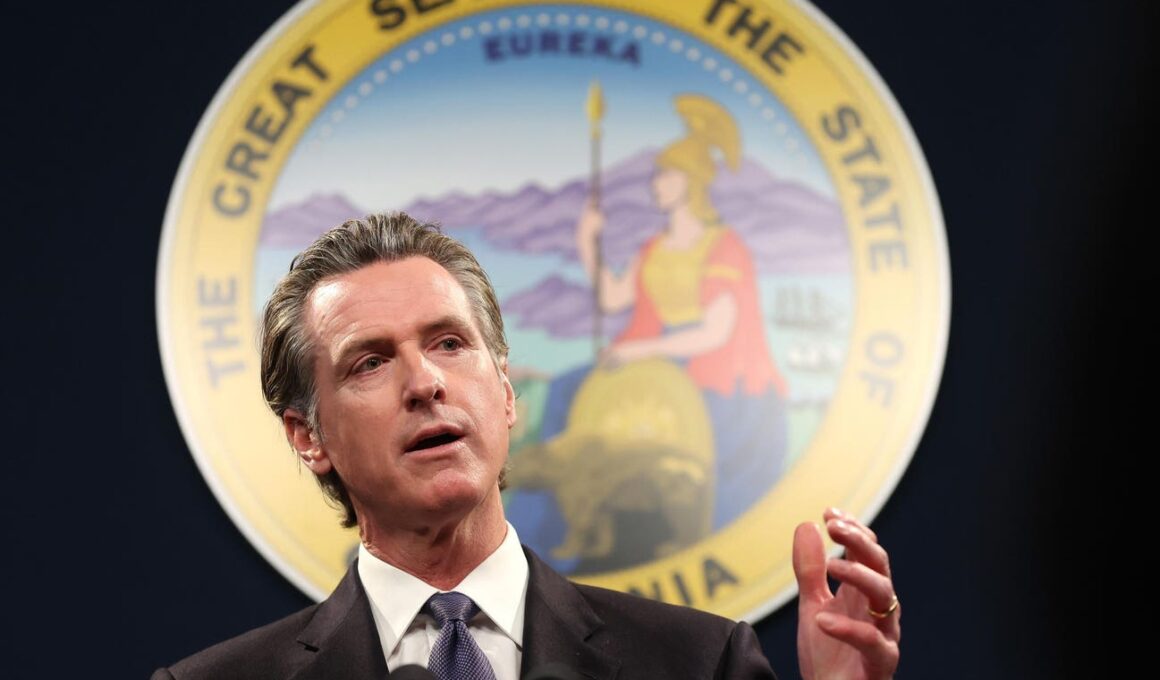Topline
Gov. Gavin Newsom, D-Calif., in a letter Tuesday asked California school districts to implement restrictions on cellphones in classrooms for the upcoming school year, which comes as other states crack down on student phone use amid mental health concerns.
Surgeon General Vivek Murthy called on schools to restrict phone usage earlier this year, citing … [+]
Key Facts
In the letter, Newsom said California school districts should “act now” to help students focus in schools by restricting their phone use, adding reduced phone use could result in “improved concentration, better academic outcomes and enhanced social interactions.”
Newsom’s office said in a statement the governor was “currently working” with California’s legislature on further restrictions for student phone use after he approved some restrictions in 2019, though the new restrictions were not specified.
Florida became the first state with a ban on cellphone use during class in a bill approved by lawmakers last year, which includes a ban on social media access while using a school’s Wi-Fi.
Indiana lawmakers approved in April a ban on wireless devices—applying to cellphones, tablets, laptops or gaming devices—during class.
Minnesota lawmakers also approved restrictions in April, requiring school districts in the state to adopt limits on cellphone use by the start of the 2025-2026 school year.
Ohio Gov. Mike DeWine signed a bill in May requiring school districts to establish policies on cellphone use, which will take effect no later than July 2025, DeWine said.
Virginia Gov. Glenn Youngkin issued an executive order last month for school districts to create policies for a “phone-free education,” limiting the time children spend on phones “without parental supervision,” which will take effect Jan. 1.
Get Forbes Breaking News Text Alerts: We’re launching text message alerts so you’ll always know the biggest stories shaping the day’s headlines. Text “Alerts” to (201) 335-0739 or sign up here.
What To Watch For
David O’Shield, chairman of South Carolina’s Department of Education, told the Associated Press a final vote on when to enact proposed restrictions for the state was postponed on Tuesday until an unspecified date in September. A committee of South Carolina lawmakers approved adding a clause to the state’s budget last month that would require schools to ban phone use by the start of 2025 or they would lose state funding. A delay in implementing the clause followed input from teachers, parents and administrators, O’Shield said. Other states have introduced legislation that would prevent students from using their cellphones while in class over the last year, including Oklahoma, Washington, Kansas, Vermont, Connecticut, Virginia, Maryland and Arizona. Gov. Spencer Cox, R-Utah, said earlier this year he supports a Utah-wide ban on phones in the classroom. Gov. Kathy Hochul said she would propose New York restrictions in 2025, according to The New York Times.
Big Number
77%. That’s the percentage of schools in the U.S. that say they restrict cellphones outside of academic use as of the 2021-2022 school year, according to the National Center for Education Statistics. A study from the nonprofit Common Sense Media found about 97% of teens use their phones during the school day.
Key Background
Calls for restrictions on cellphone use in schools have increased in recent years, as studies indicate the negative impact of social media on youth as phone use rises. A study by the Pew Research Center in April found about 72% of high school teachers and 33% of middle school teachers in the U.S. said cellphone distractions were a “major problem” during class. Despite calls for statewide bans, bans are largely opposed by parents who say their children need phones for emergencies, while some school officials say restrictions will be difficult to enforce. In an op-ed for The New York Times last month, Surgeon General Vivek Murthy said a warning label should be required on social media platforms, stating “that social media is associated with significant mental health harm for adolescents.” Murthy previously issued an advisory in 2023, warning about the impacts of social media use on youth mental health, noting evidence indicates “profound risk.”
Further Reading









